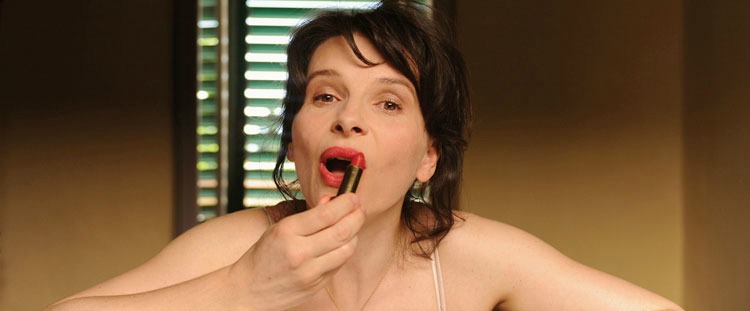Certified Copy
Juliette Binoche is stunning; mature, sexy and wildly erratic in a way that makes me wonder why she hasn’t played more mad women in attics.
Plot summary
James Miller, an English writer, is in Tuscany to promote his new book. He meets an unidentified gallery owner who attends his lecture on the subject of art and the value of original works versus copies. The pair decides to embark upon a sightseeing journey through the picturesque Tuscan countryside.

Let me first say this; I love old Juliette Brioche.
I really love her. If you’d asked me a couple of months ago I probably would have said “God, I could just watch her for hours. Give me Juliette Binoche, in a nice outfit, and I’m happy. Throw in a silver fox, some beautiful Tuscan landscape and some romance and I’m happier than un cochon in merde.”
Which just goes to show what a plumheaded fool I can be, because, frankly, I didn’t enjoy Certified Copy at all. Described in the ‘short synopsis’ handed out at my screening as ‘the story of a meeting between one man and one woman, in a small Italian village… this is a common story that could happen to anyone, anywhere,’ the film was in fact a confusing depiction of an incomprehensible relationship.
The Woman, played by Juliette Binoche is a beautiful, learned mother who owns an antique shop and attends a lecture being given by The Man. The Man, played by William Shimell, is a historian and author who has written a book about the old original vs copy debate from which the film takes it’s title. The two meet up at some point after the lecture, which she had to leave early because her son is sick of philosophical/esoteric posturing and wants a burger. I know how he felt. The Woman and Man then go on to have a very strange day in and around a Tuscan town.
I say strange, what I probably mean is deliberately flummoxing. At first this meeting seems very like a date – she is nervous, he is polite, she wears heels, he acts suave and they are both shy of suggesting what to do. Then, as they drive, the conversation becomes more confrontational, more academic while they discuss his book. Once at their destination The Woman suddenly bursts in to tears about the way The Man describes his attitude to work and family. I should point out that he is describing a possibly fake relationship and possibly fake family because The Woman has let the owner of a café believe that they are a married couple. So, they may be married. They may be divorced. They may be neither. And she is crying about the way he described his possibly fictional marriage to her.
Later in the film the two have a big argument in a restaurant. It is the kind of irrational, emotional, backwards-looking argument of a weary husband and wife locked in a dysfunctional marriage. After storming out of the restaurant the couple then go to a hotel they possibly stayed at before (although The Man cannot remember it) where The Woman lies seductively on a bed in the evening light, begging The Man for a little love and affection. Remember, this is all just a few hours – or a mere hour of screen time – since the two were nervously dancing around each other like strangers on a first date.
It almost goes without saying that the film is beautiful to look at. Juliette Binoche is stunning; mature, sexy and wildly erratic in a way that makes me wonder why she hasn’t played more mad women in attics. William Shimell is attractive, versatile and very convincing during his spiteful moments. The Italian scenery is gorgeous, well worth director Abbas Kiarostami making his first trip out of Iran for. The problem is the script: the relationship was too opaque, the dialogue too odd to be truly convincing and the plot too ambiguous.
I left the screening feeling rather sheepish, that perhaps I had missed the whole point; that I was too stupid to ‘get’ the film. But then I thought, ‘Oh who cares. I want a burger.’











COMMENTS